MT. BLANCO FOSSIL MUSEUM AND CASTING CO.
124 W. Main, P.O. Box 550, Crosbyton, TX 79322 (806) 675-7777 (806) 675-2421 (Fax)
THIS SITE CURRENTLY UNDER CONSTRUCTION
|
MT. BLANCO FOSSIL MUSEUM AND CASTING CO. |
||||||||||||||||
|
124 W. Main, P.O. Box 550, Crosbyton, TX 79322 (806) 675-7777 (806) 675-2421 (Fax) |
||||||||||||||||
|
|
||||||||||||||||
|
THIS SITE CURRENTLY UNDER CONSTRUCTION |
||||||||||||||||
|
WACO SUDDEN DEATH MAMMOTH |
|
Sudden Death Mammoth Painting by Joe Taylor. |
|||
|
Below is a skull from juvenile female held in bull’s tusks. The skull was buried upside down after it floated 10 feet from the body. After petrification, something crushed the bull’s skull. Perhaps a tree grew on top of it and was later pushed over by a storm. Taylor has seen trees in the area do just that. |
|||
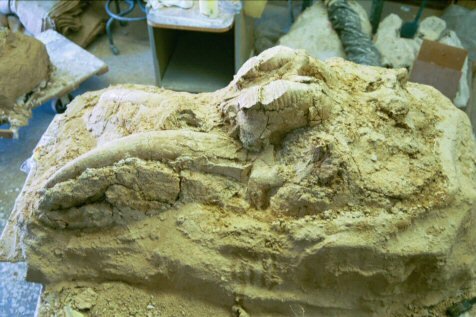 |
|||
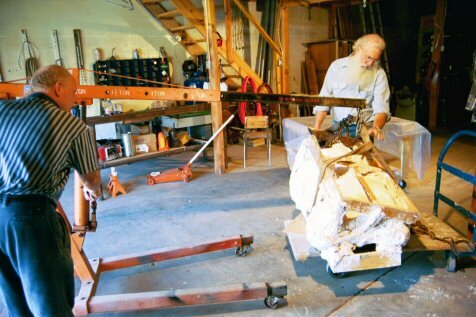 |
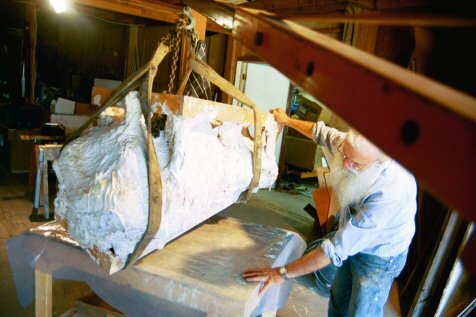 |
|
Assistant Joel Peck (left) and Joe Taylor inches the heavy mammoth skull in its field jacket to work table for restoration. |
||||||||||||||||||
|
Skull is moved on to work table (Mt Blanco Museum shop). |
||||||||||||||||||
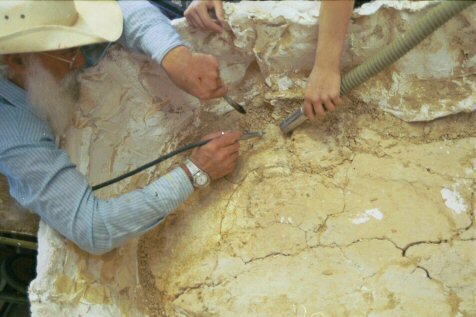 |
||||||||||||||||||
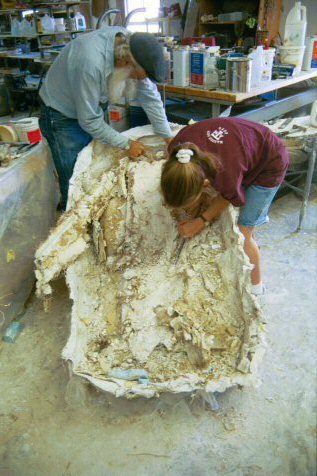 |
||||||||||||||||||
|
Stacey Latimer vacuums away the matrix being removed by the Chicago pneumatic. |
||||||||||||||||||
|
Joe and museum volunteer Stacey Latimer removing the field jacket from off of the skull. |
||||||||||||||||||
|
A pencil-sized jackhammer called a Chicago pnuematic is used to remove the clay and calcium carbonate from the fragile mammoth skull. The matrix has to be carefully removed a fraction of an inch at a time, and the fractured bones hardened with PVA (Polyvinyl acetate). |
||||||||||||||||||
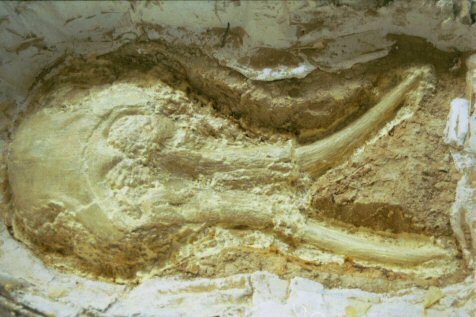 |
||||||||||||||||||
|
Several layers of latex are applied to produce one of the molds. |
||||||||||||||||||
|
|
|||||||||||||||||||||||||||||||||
|
SECOND LARGEST MOLD EVER MADE OF AN IN SITU ANIMAL |
|
|
|
|
|
||||||||||||||||||||
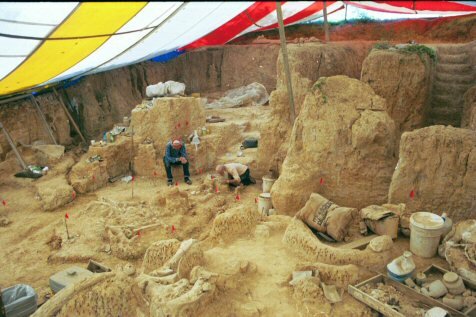 |
|
|
||||||||||||||||||||||||||||||||||||||||||||||||||||||||||||||||||||||||